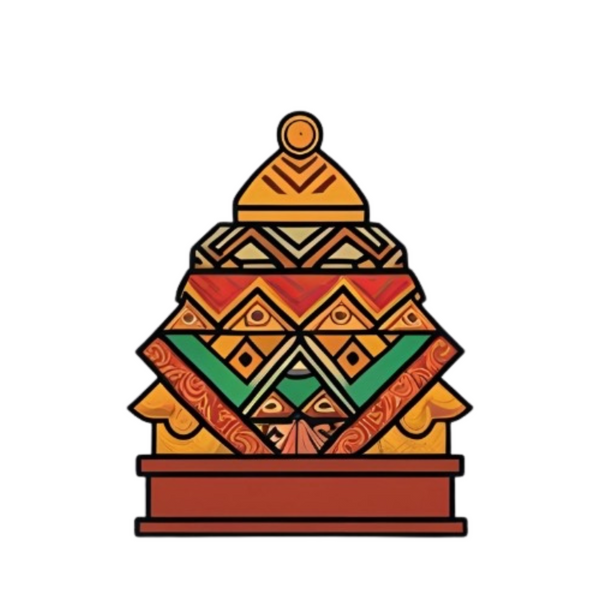
What Are Tibetan Prayer Beads? A Complete Beginner's Guide
Share
Have you ever seen someone moving a string of exquisite beads through their fingers, perhaps murmuring softly? That string is most likely a Tibetan prayer bead necklace, known as a mala. It's far more than just an accessory; it's an essential tool in Tibetan Buddhist practice and a companion for the mind and soul. Today, let's explore this ancient instrument of wisdom and tranquility.
What Exactly is a Tibetan Mala?
A Tibetan prayer bead necklace, called "卍" in Tibetan (pronounced "guan," meaning "mala"), is primarily used for counting during meditation, chanting mantras, or reciting prayers. Each time practitioners recite a prayer or mantra once, they move one bead, helping to focus the mind on the present moment and prevent distraction.
It's more than just a counter; it's a symbol:
· Cycle and Completeness: The circular string of beads symbolizes the cycle of life and the perfection of the spiritual path.
· Severing Distractions: The beads themselves, and the practice of using them, are seen as a tool to cut through ignorance and mental afflictions.
The Anatomy of a Mala
A standard Tibetan mala typically consists of 108 main beads, a sacred number in Buddhist culture. Additionally, it includes these key components:
-
The Guru Bead (Head Bead): This is the 109th, and usually largest, bead. It represents the wisdom of the Buddha or one's teacher and marks the starting and ending point of the mala cycle.
-
Counters: These are often two separate strings of 10 smaller beads, sometimes with small ritual objects attached. They are used to count full rounds of mantras (e.g., 10 rounds of 108).
-
Divider Beads: Some malas feature beads of a different material or color inserted every 27 beads, making it easier to count segments.
-
Tassel: The silk threads extending from the guru bead symbolize the compassionate energy of the Buddha flowing down to all sentient beings.
Common Materials and Their Meanings
Tibetan malas come in various materials, each carrying different energies and aspirations:
· Bodhi Seeds: The most common and sacred, believed to be from the tree under which the Buddha attained enlightenment, representing awakening.
· Sandalwood (e.g., Green, Red): Known for its fragrant aroma, it helps calm and focus the mind.
· Conch Shell: An organic gem from the ocean, representing purity and cleansing.
· Agate, Carnelian: Available in rich colors, believed to possess protective and stabilizing energies.
· Bone (e.g., Yak Bone): Reminds practitioners of the impermanence and preciousness of life.
· Semi-Precious Stones (e.g., Lapis Lazuli, Coral, Amber): Highly valued in tradition, symbolizing wisdom, vitality, and protection.
Mala Bracelets for Everyday Mindfulness
Many practitioners also wear mala bracelets for daily mindfulness. These smaller versions of the full 108-bead mala — usually 18 or 27 beads — are perfect for meditation on the go or as a gentle reminder of peace throughout the day.
Explore our handcrafted Tibetan mala bracelet, including the Handcrafted Tibetan Skull Mala Bracelet – Camel Bone Amulet Bead — a powerful symbol of impermanence and protection, intricately carved from natural bone and imbued with Himalayan spiritual artistry.
Each piece blends traditional symbolism with modern craftsmanship, making it both a meaningful spiritual tool and a timeless accessory.
How Can a Beginner Use a Mala?
You don't need to be a Buddhist to benefit from using a mala. Here are simple steps:
-
Set an Intention: Before you begin, quiet your mind and set a simple intention, such as "May I be peaceful" or a dedication for the benefit of others.
-
How to Hold It: Use your dominant hand (usually the right). Drape the mala over your middle or index finger.
-
Start Moving the Beads: Begin with the first bead next to the guru bead. Use your thumb to gently pull a bead toward you as you silently or softly recite your chosen mantra (e.g., Om Mani Padme Hum), affirmation (e.g., "I am calm"), or simply focus on your breath.
-
Continue the Cycle: Continue moving bead by bead until you return to the guru bead. Do not cross over the guru bead; this shows respect for the wisdom it represents. Instead, pause, then gently turn the mala around to begin a new round.
In Conclusion
A Tibetan mala is a pathway to inner peace. Whether you are drawn to its beautiful craftsmanship, profound culture, or meditative function, it can become a powerful reminder in your daily life—to slow down, turn inward, and cultivate mindfulness.
May this simple guide help you begin your journey with mala beads. Perhaps you can find a mala that resonates with you and start your own practice of mindful awareness.
